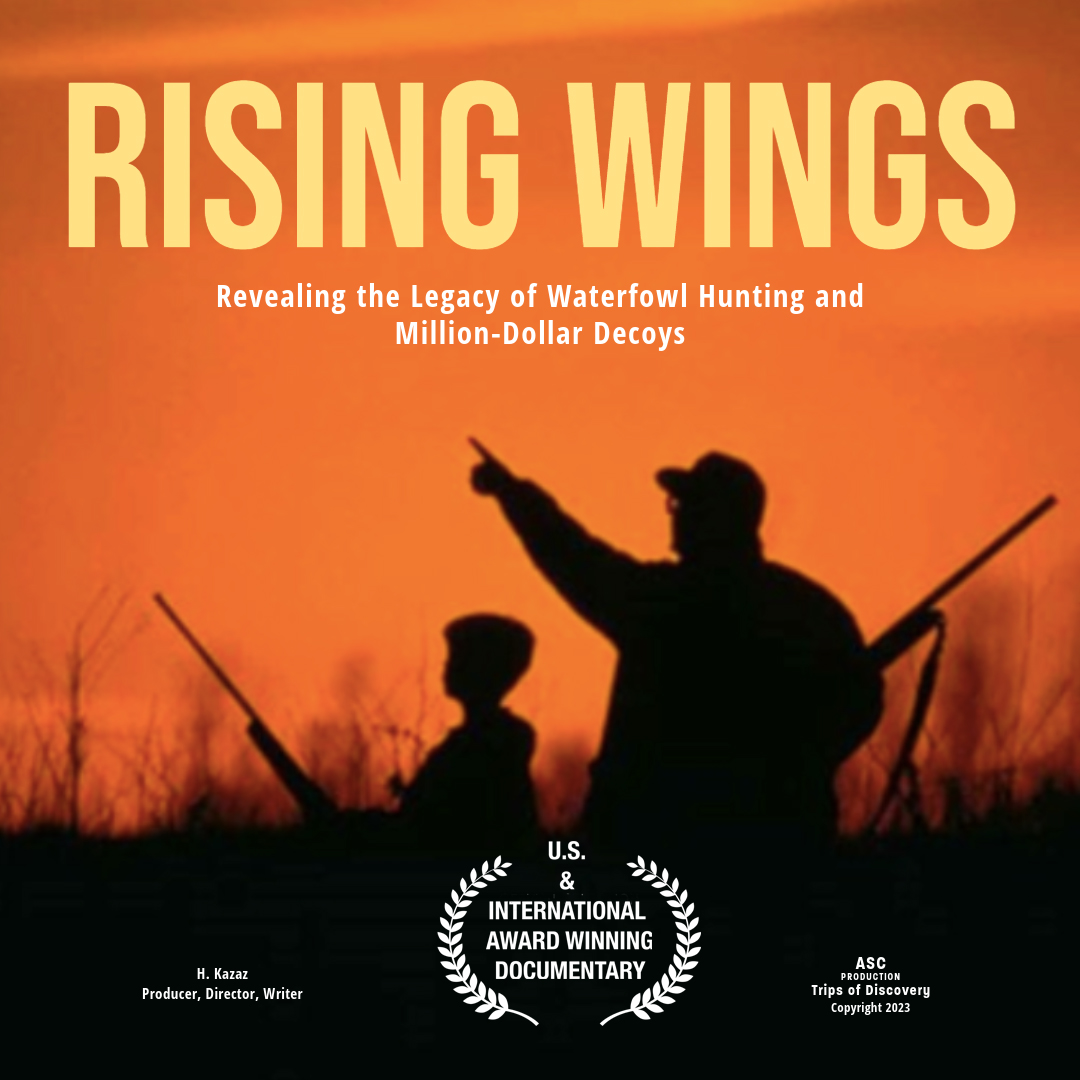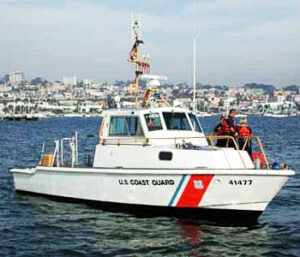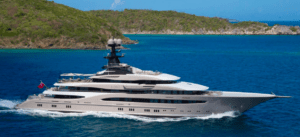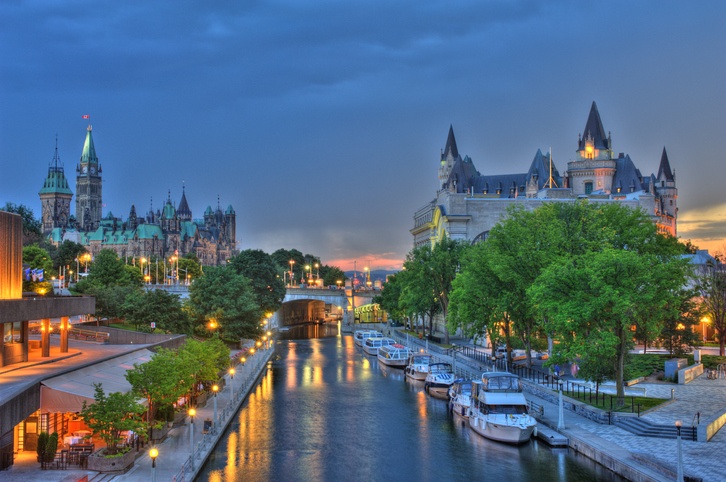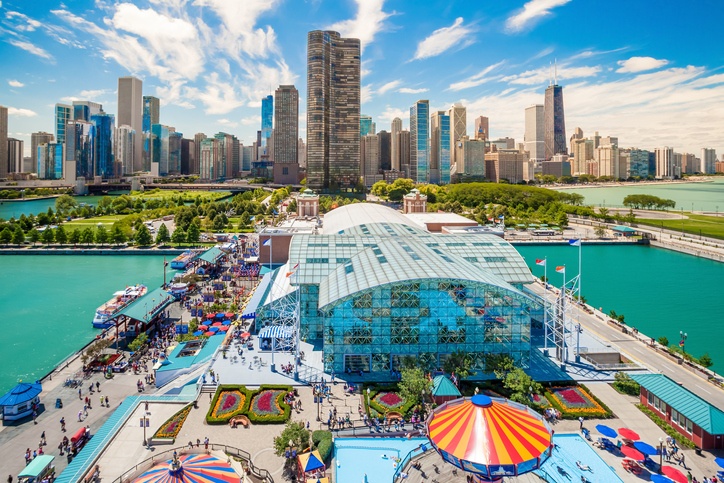Beaufort, SC – Sailing into southern charm in the Carolina Lowcountry
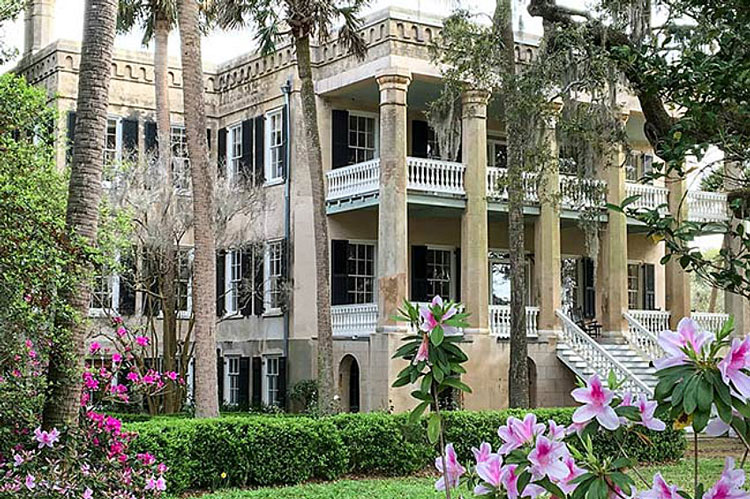
Estimated reading time: 15 minutes – SBFL* Stop 31 – Planned – Did you know that there’s an island in South Carolina that strictly belongs to 4,000 monkeys? That’s right, we’re talking about a monkey town made up of more than 2,000 acres of pristine land, Morgan Island. It’s near Beaufort, South Carolina. You can’t land on it, but certainly, go around to catch a glimpse of the monkey colony that started in 1979.
Get ready to set sail and discover a hidden gem of southern charm and luxury as you cruise the Lowcountry of South Carolina, home to 68 Sea Islands. Although you can’t visit many of the islands, Beaufort is the queen of the Carolina Sea Islands, where eight towns call home on eight major islands.
In our last post, we planned a trip to Charleston, SC, as part of our Slow Boat to Florida (SBFL*) series, and now we’re eyeing our next destination: Beaufort. Our plan is to go slow, really slow, and avoid overlooking the many wonderful stopover opportunities along the Intracoastal Waterway (ICW) as we journey along the Eastern Seaboard. This is the Atlantic Seaboard leg of the much bigger America’s Great Loop journey. Go too fast, and you might just miss out on all the fun!
The ICW distance between Beaufort, SC, and Charleston, SC can vary depending on the specific route taken, as the ICW is made up of a series of rivers, bays, and canals. Generally, the distance between the two cities via the ICW is approximately 70 to 80 nautical miles. If you’re sailing from North to South on your way to Beaufort, don’t forget that you can go around Morgan Island first to catch glimpses of the wild monkeys.
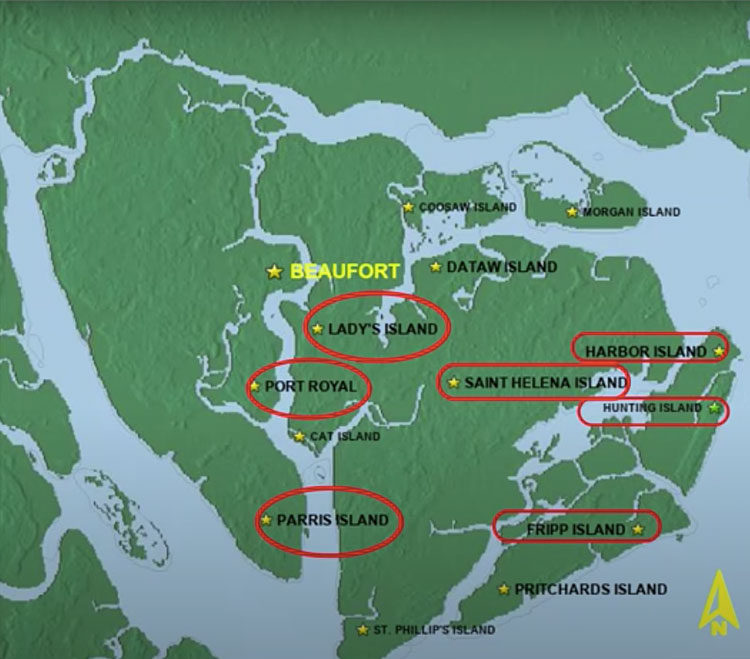
Sea Islands of South Carolina. Courtesy of Sue LeFavi
So why not trade in a common stopover destination by boaters, like Hilton Head Island, for Beaufort for a couple of days? You won’t regret it! The town is known for its well-preserved history, natural beauty, and charming atmosphere. Southern Living magazine readers consistently rate Beaufort as one of the “Best Small Towns in the South” in the magazine’s annual survey. And why not retire there? Beaufort often appears on lists of the “best places to retire.”
Described as a smaller version of its historic big city sisters, Savannah and Charleston, Beaufort’s year-round temperature averages a comfortable 65 degrees. Coastal residents and visitors alike adore the area’s temperate climate because it allows outdoor recreation for twelve months of the year. So what are you waiting for? Chart your course and set sail for Beaufort!
Avoid getting confused
Remember our plans for Beaufort, North Carolina? Well, don’t get your pronunciation in a knot – that’s Bow-fert. But now, we’re headed to its counterpart in South Carolina, pronounced Bew-fort. Trust us, you don’t want someone to remind you that you’re in South Carolina’s Bew-fort!
Now that we’ve got that sorted out, get ready for a wonderful visit. This town was occupied by Union forces during the Civil War, which spared it from destruction and allowed many antebellum homes and buildings to be preserved. So, get your cameras ready for an architectural feast well before you even reach Savannah, Georgia.
Cranking up the old time machine
Beaufort is a city rich in history. It’s the second-oldest city in South Carolina, following Charleston, and is located on Port Royal Island, in the heart of the Sea Islands of the Lowcountry region.
The area was first explored by Europeans in the early 16th century when the Spanish arrived, followed by the French and the English. In 1663, the English established the Province of Carolina, which included the Beaufort area.
The town was founded by the English in 1711 and named in honor of Henry Somerset, Duke of Beaufort. During the colonial era, Beaufort became an important center for the indigo and rice trade, which led to the development of many plantations and the growth of a wealthy planter class.
Beaufort played a significant role in both the American Revolution and the Civil War. During the Revolution, the city was captured by the British in 1779 and remained under their control until 1781. The town was also occupied by Union forces during the Civil War. In the years following the Civil War, Beaufort experienced economic hardship due to the decline of the plantation system. The town eventually recovered and became a popular destination for tourists, who were drawn to its beautiful waterfront, historic architecture, and charming downtown area.
Beaufort is known for its well-preserved historic district, which features numerous pre-Civil War buildings, churches, and homes. The city’s history and culture are celebrated through various events, including the annual Beaufort Water Festival, the Beaufort International Film Festival, the Beaufort Shrimp Festival, and the ten-day-long Sea Festival.
And today?
When you arrive in Beaufort by boat from the ICW, you will quickly discover that the town offers a variety of activities and attractions for visitors. Beaufort’s historic downtown is filled with charming streets, antebellum homes, shops, galleries, and restaurants. You can enjoy a stroll along Bay Street, which offers picturesque views of the Beaufort River.
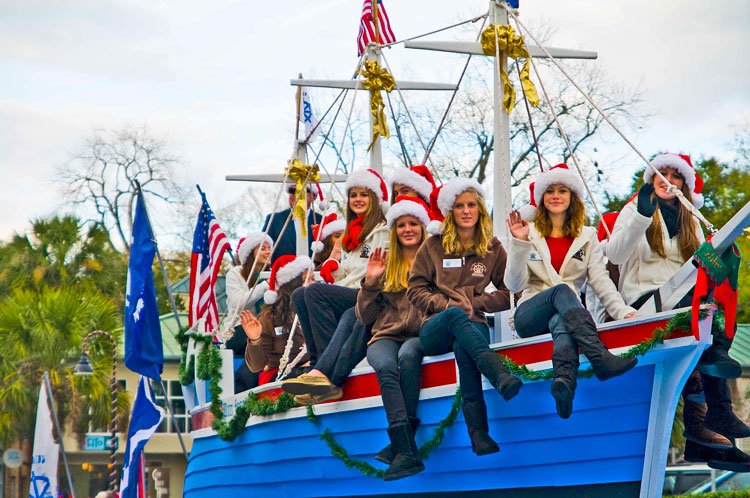
Beaufort’s historic district is one of the largest and best-preserved in the United States. You can take a guided walking tour or a narrated horse-drawn carriage tour to learn about the history and architecture of the area. If you want to relax and enjoy the natural beauty of the Lowcountry, Henry C. Chambers Waterfront Park located along the Beaufort River is the perfect spot. You can also visit nearby Hunting Island State Park, just a short drive away. This beautiful barrier island offers pristine beaches, a historic lighthouse, and hiking trails.
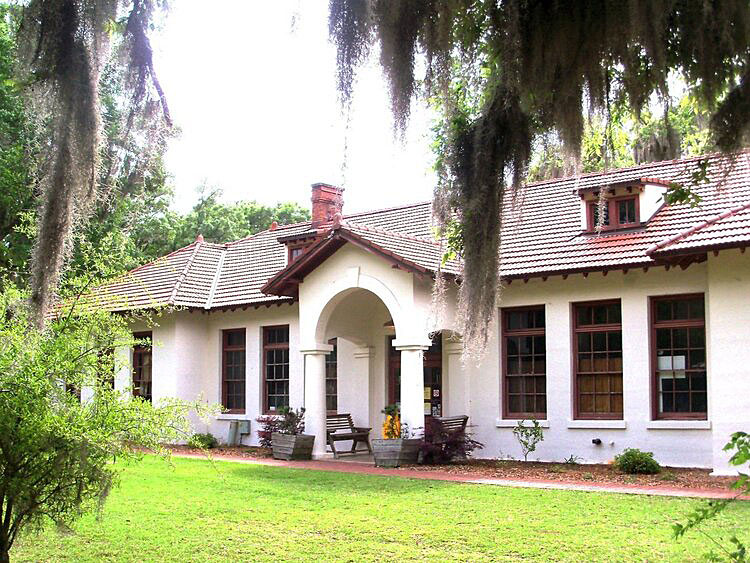
If you want to see a place that you don’t come across often, you can tour the Penn Center. It is an important African-American cultural and educational institution located on nearby St. Helena Island. It was founded in 1862 to educate freed slaves and played a pivotal role in the Civil Rights Movement. At the Center, you can experience the heart of Gullah culture and absorb the echoes of generations past in a revered historic site, all in one place.
The Gullah Geechee Visitors Center is also located on St. Helena Island. This very modest center is dedicated to preserving and promoting Gullah Geechee culture, history, and traditions. Visitors can learn about the Gullah people’s unique heritage through exhibits and educational programs.
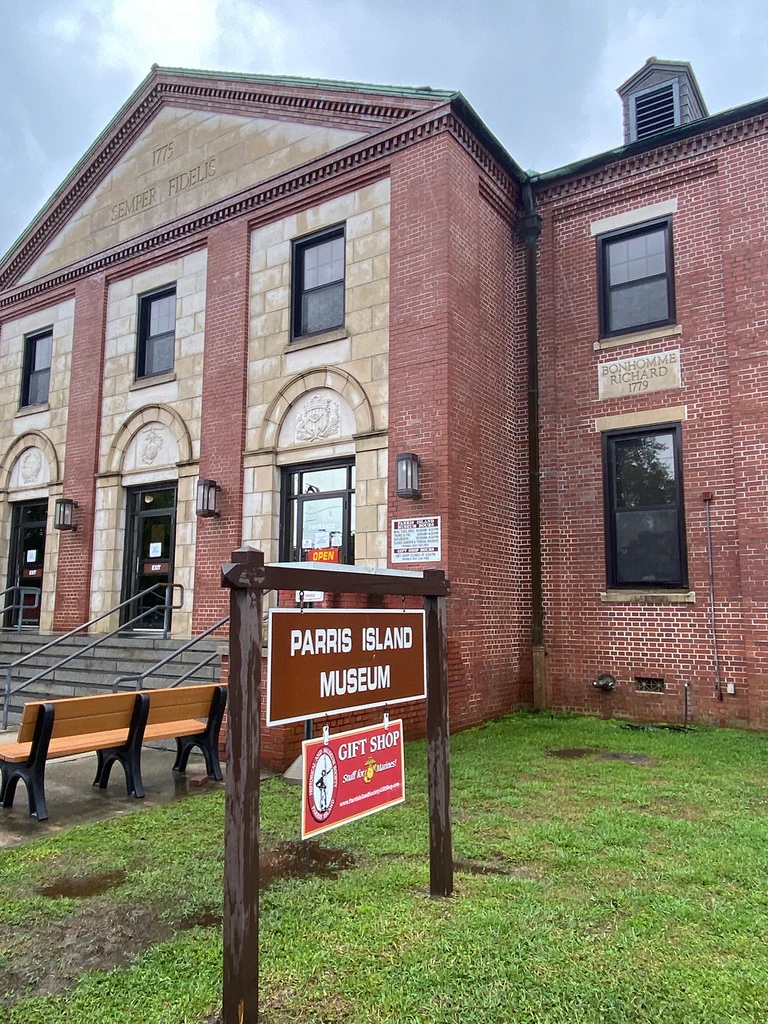
How about another unusual museum visit for you? Go to the Parris Island Museum. This museum, located at the Marine Corps Recruit Depot, Parris Island, provides insight into the history of the Marine Corps and the recruit training process. You can learn what it means to become a United States Marine.
You may also want to visit the Pat Conroy Literary Center. It’s dedicated to the life and works of the famous author and Beaufort native, Pat Conroy. The center offers exhibits, educational programs, and events celebrating Conroy’s literary contributions.
The Santa Elena History Center is dedicated to the story of Santa Elena, a 16th-century Spanish settlement that predates the founding of Beaufort. The center offers exhibits and interactive displays about the history and archaeology of Santa Elena.
By the way, don’t miss the Kazoobie Kazoos Factory and Museum. This unique establishment is dedicated to the whimsical and nostalgic musical instrument, the kazoo. If you think you know what a kazoo is, think again. There is a lot to learn about kazoos. Visitors can take a tour of the Kazoo factory, learn about the history of kazoos, and even make their own kazoo to take home. Also, don’t forget to get a picture in front of a large American flag made entirely of kazoos.
Did you say ghost? Sure, they have local ghost tours as well. Beaufort is known for its historic hauntings, and there are several ghost tours available that take visitors through the city’s storied past. These tours often include a mix of history, folklore, and spooky tales, providing both entertainment and a touch of humor.
You won’t go hungry in Beaufort
Beaufort offers a variety of dining options, ranging from casual eateries to fine dining establishments. A culinary feast awaits you. You can check out a restaurant list in my recommendations section below.
What did they miss by rushing?
As our avid readers know, our Slow Boat to Florida series was inspired by a similar journey done by Dorothea and Stuart Jones back in 1957. Their impressions were published by National Geographic Magazine in January 1958, under the title of “Slow Boat to Florida.” Our second inspiration source has been Allan C. Fisher Jr. and his book, “America’s Inland Waterway: Exploring the Atlantic Seaboard,” published in 1973. With some exceptions, both authors used the same stop-over locations, and all three worked for National Geographic Magazine. In a minor way, we also have been referring to a 1912 book by Henry Plummer titled, “The Boy, Me and the Cat,” a classic tale of a trip down the Intracoastal Waterway in 1912. We use all three sources as a time capsule and guide for our trip planning by following their path in a major way. Especially once we actually visit the stop-over locations, we will compare then and now, to capture the essence of life in these localities. We will also meet with the locals, just like we did on our Smith Island, Maryland and Tangier Island, Virginia visits.
So, the Joneses only had two small paragraphs about Beaufort, SC. However, they captured an interesting point, stating that many houses in town were built of tabby. Tabby? What is that? As they explained it, tabby is a crushed-oyster-shell material peculiar to the Lowcountry. Fisher, also in his two paragraphs, talked about the town being very hospitable to his crew. That tells me perhaps they had a limited schedule and budget and were rushing.
What did they miss seeing? We did some forensic digging on that point. Let’s start with the downtown area. The historic downtown, with its beautiful streets and buildings, has been a central part of Beaufort since its founding. Visitors in 1958 and 1973 could have enjoyed strolling downtown and exploring the shops and restaurants available at the time. The Joneses did not miss that. The historic district has been preserved and appreciated for many years. Although guided tours and carriage rides may not have been as popular or widely available in 1958 and 1973, visitors could still have explored the historic district independently.
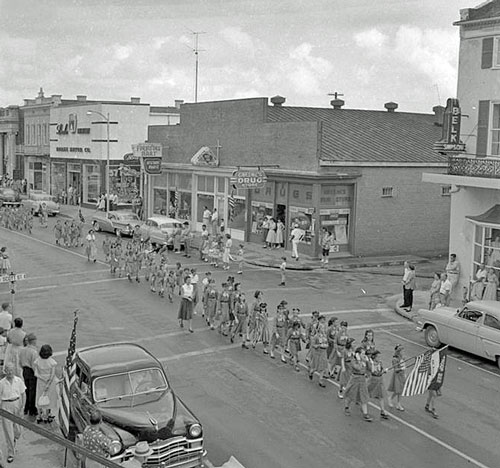
Henry C. Chambers Waterfront Park was developed in the late 1970s, so it was not available to visitors in 1958 and 1973.
The Penn Center was established in 1862 and was an important cultural and educational institution during the 1950s and 1970s. Visitors during those years could have visited and learned about its history and significance.
The Beaufort History Museum was founded in 1939, so it was available to visitors in both 1958 and 1973.
Boat tours may not have been as developed or widely available in the 1950s and 1970s, but it is likely that there were some options for visitors interested in exploring the waterways around Beaufort.
Local events and festivals such as the Beaufort Water Festival, which began in 1956, were available in both 1958 and 1973. Other events, like the Beaufort Shrimp Festival and Beaufort International Film Festival, were not established until later.
Restaurants serving Lowcountry cuisine and seafood have been a part of Beaufort’s culinary scene for many years, so visitors in 1958 and 1973 could have enjoyed local dishes.
Hunting Island State Park was established in 1935, making it available for visitors to enjoy in both 1958 and 1973. In summary, while not all of the activities initially mentioned were available in 1958 and 1973, there were still a variety of attractions and activities for visitors to enjoy during those years. Lessons learned? Go with a Slow Boat to Florida (pun intended).
Hollywood visited the town several times
Beaufort, South Carolina, has been a popular filming location for several well-known movies due to its picturesque scenery, historic architecture, and Southern charm.
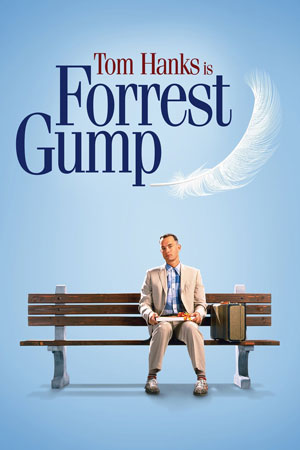

Some of the most famous movies filmed in and around Beaufort include:
- Rules of Engagement (2000): This military drama, starring Tommy Lee Jones and Samuel L. Jackson, was filmed at various locations in Beaufort, including the Marine Corps Air Station Beaufort.
- G.I. Jane (1997): Starring Demi Moore, this action film includes scenes shot at the Marine Corps Air Station Beaufort and Hunting Island State Park.
- Forrest Gump (1994): Starring Tom Hanks, this iconic movie features various locations in and around Beaufort, including the bridge over the Combahee River, Hunting Island, and several streets and private residences in the city.
- The Prince of Tides (1991): A film adaptation of a Pat Conroy novel, this drama stars Barbra Streisand and Nick Nolte. Several scenes were shot in Beaufort and on nearby Fripp Island.
- The Big Chill (1983): This popular drama-comedy features a group of friends reuniting for a funeral. The movie was filmed at various locations in Beaufort, including the historic Tidalholm Mansion, which served as the primary setting for the film.
- The Great Santini (1979): Based on Pat Conroy’s novel, this drama stars Robert Duvall and was filmed at several locations in Beaufort and the surrounding area, including Marine Corps Air Station Beaufort and the Beaufort National Cemetery.
Beaufort has its own celebrities
The town has been home to several notable individuals, either as their birthplace or their residence. Who are they?
Let’s start with Pat Conroy (1945-2016). A renowned author, Conroy wrote many best-selling novels, including “The Great Santini,” “The Prince of Tides,” and “The Water Is Wide.” Many of his works were inspired by his experiences growing up in Beaufort and the Lowcountry.
Then comes Candice Glover. A talented singer and the winner of the 12th season of the television show “American Idol,” Glover was born in Beaufort and started her musical career there.
We shouldn’t forget Robert Smalls (1839-1915). He was born into slavery in Beaufort. He became a hero during the Civil War when Smalls commandeered a Confederate ship and sailed it to freedom. He later became a prominent politician, serving in the South Carolina State Legislature and the United States Congress.
Tom Berenger is an Academy Award-nominated actor known for his roles in films such as “Platoon,” “Major League,” and “The Substitute.” Berenger has called Beaufort home for several years.
Last, but not least, Jonathan Green. He is a renowned artist whose work focuses on the Gullah culture and the African American experience in the Lowcountry. Green was born and raised in the Beaufort area.
Well, that’s it for now. Stay well. I hope to say hello to you if you spot my boat, Life’s AOK, in one of the locations that I’m hoping to visit in 2023, that is, if whatever the latest version of the pandemic permits us.
I bid you Fair Winds and Following Seas.
Cover photo: Courtesy of Wilson McElveen. One of Beaufort’s most well-known and celebrated old homes is The Castle, also known as the Joseph Johnson House over on Craven Street in downtown’s Point Neighborhood. The home is also rumored to be haunted in one of Beaufort’s most legendary tales.
A few things I learned
Gullah culture and cuisine to taste
- The Gullah culture refers to the uniquely African American heritage, traditions, and dialect found in the Lowcountry regions of South Carolina and Georgia, including the Sea Islands. The Gullah people are descendants of enslaved Africans who were brought to the United States for their expertise in rice cultivation. Over time, due to the relative isolation of the Sea Islands, the Gullah people developed a distinct cultural identity, blending elements from their African roots with influences from the American South.
- The Gullah language is a Creole dialect that combines English with elements from various West African languages. The Gullah people are also known for their rich storytelling, folklore, music, and craftsmanship, particularly in the form of sweetgrass basket weaving.
- Gullah cuisine reflects the resourcefulness and creativity of the Gullah people, who made the most of the ingredients available to them while preserving the culinary traditions of their African heritage. Today, Gullah cuisine is celebrated for its unique flavors and its influence on the broader Southern food culture. Gullah cuisine is an important aspect of the Gullah culture and has significantly influenced Southern cooking. It emphasizes the use of locally available ingredients, particularly seafood, rice, and vegetables. Some traditional Gullah dishes include:
Hoppin’ John: A dish made with black-eyed peas, rice, and smoked pork, typically served with collard greens and cornbread.
Shrimp and Grits: A popular Southern dish that originated in Gullah cuisine, featuring sautéed shrimp served over creamy grits, often with bacon, onions, and peppers.
Okra Gumbo: A stew made with okra, tomatoes, onions, and a variety of meats or seafood, typically served over rice.
Red Rice: A flavorful rice dish made with tomatoes, onions, bell peppers, and spices, often cooked with sausage or bacon.
Frogmore Stew (also known as Lowcountry Boil): A one-pot seafood boil that typically includes shrimp, corn on the cob, sausage, and red potatoes, seasoned with Old Bay or a similar spice blend.
She-crab Soup: A rich, creamy soup made with crabmeat, crab roe, and a variety of seasonings.
2 things I recommend
1- If you have only one full day in Beaufort, SC, here are 3 things that you should not miss doing:
- Explore the Historic District
- Visit Henry C. Chambers Waterfront Park
- Sample local cuisine. There’s no better way to get a true sense of a place than through its food.
2- Here are some restaurants for you to consider.
- Saltus River Grill: Known for its seafood dishes, sushi, and steaks, this upscale restaurant offers an elegant dining experience with beautiful views of the Beaufort River.
- Old Bull Tavern: A gastropub that serves a variety of comfort food dishes, including gourmet burgers, wood-fired pizzas, and seasonal menu items using locally sourced ingredients.
- Wren Bistro & Bar: This contemporary bistro offers an array of dishes, from seafood and steaks to pasta and salads, in a stylish, cozy atmosphere.
- Breakwater Restaurant & Bar: A popular spot for seafood, steaks, and Southern-inspired dishes, Breakwater offers a sleek dining space and an extensive wine list.
- Plums Restaurant: Located along the waterfront, Plums offers a casual dining experience with a focus on fresh seafood, sandwiches, and Lowcountry cuisine.
- Panini’s on the Waterfront: Offering Italian-inspired dishes, including paninis, pasta, and seafood, this casual eatery is situated in a historic building with views of the Beaufort River.
- Boundary Street Café: A cozy café known for its Southern comfort food, including fried chicken, shrimp and grits, and homemade biscuits.
- Dockside Restaurant: This casual, waterfront restaurant serves up seafood, steaks, and Lowcountry favorites, with outdoor seating available overlooking the water.
- Blackstone’s Café: A popular breakfast and lunch spot, Blackstone’s Café offers a variety of menu items, from omelets and pancakes to sandwiches and salads.
- Lowcountry Produce Market & Café: This market and café combination features locally-sourced produce and products, along with a menu of sandwiches, salads, and homemade soups
How easy?

Marinas where you can stay overnight or longer
Beaufort, South Carolina, has several marinas that cater to pleasure boaters. While marinas may not have a specific “star” rating system like hotels, there are a few well-regarded marinas in the area that offer top-notch amenities and services for boaters. Here are a few marinas in Beaufort to consider:
- Beaufort Downtown Marina: Located on the Beaufort River, this marina is within walking distance of Beaufort’s historic downtown area, offering convenient access to restaurants, shops, and attractions. Amenities include transient slips, fuel, pump-out services, showers, and restrooms.
- Lady’s Island Marina: Situated on Factory Creek, this marina is just a short drive from downtown Beaufort. Lady’s Island Marina offers transient and long-term slips, fuel, pump-out services, a boater’s lounge, showers, laundry facilities, and an on-site restaurant.
- Port Royal Landing Marina: Located on Battery Creek, this marina is a short drive from downtown Beaufort and offers a range of amenities such as transient and long-term slips, fuel, pump-out services, a ship store, showers, restrooms, laundry facilities, and a courtesy shuttle to nearby attractions.
- Dataw Island Marina: Situated on the Morgan River, this marina is part of the private Dataw Island community and offers transient slips, fuel, pump-out services, a ship store, showers, restrooms, and laundry facilities. It is located a short drive from downtown Beaufort.
*SBFL stands for Slow Boat to Florida. Each numbered heading has two parts. The first is “Planned or Planning to Visit,” and when we visit the planned location, a “Visited” label appears at the beginning, next to SBFL.
Join us on our journey of discovery along the Atlantic Intracoastal Waterway (ICW)! We’re taking you with us, through our blog “Trips of Discovery,” as we follow in the footsteps of three National Geographic editors – Dorothea and Stuart E. Jones and Allan C. Fisher, Jr. In this series, we’ll show you the past, present and a glimpse into the future, as we compare and contrast the locations visited by the Joneses (1958 National Geographic article, “Slow Boat to Florida”) and Fisher (1973 book, “America’s Inland Waterway”), respectively. But don’t worry, we’ll add our own personal touch by sharing our observations and interviews with local residents during our visits.
In this series, we’ll take you to some of the most historic and charming spots along the ICW and share our personal observations and experiences. Who knows, you might even be inspired to plan your own adventure!
My wife and I hope you’ll be able to join us on the journey, either by boat or by car. Don’t hesitate to reach out and share your own insights or experiences about the locations we visit. We’d love to hear from you and keep the conversation going! And if not, don’t worry, you can still follow along as armchair travelers! So sit back, relax, and let’s embark on our Trips of Discovery of the ICW.
